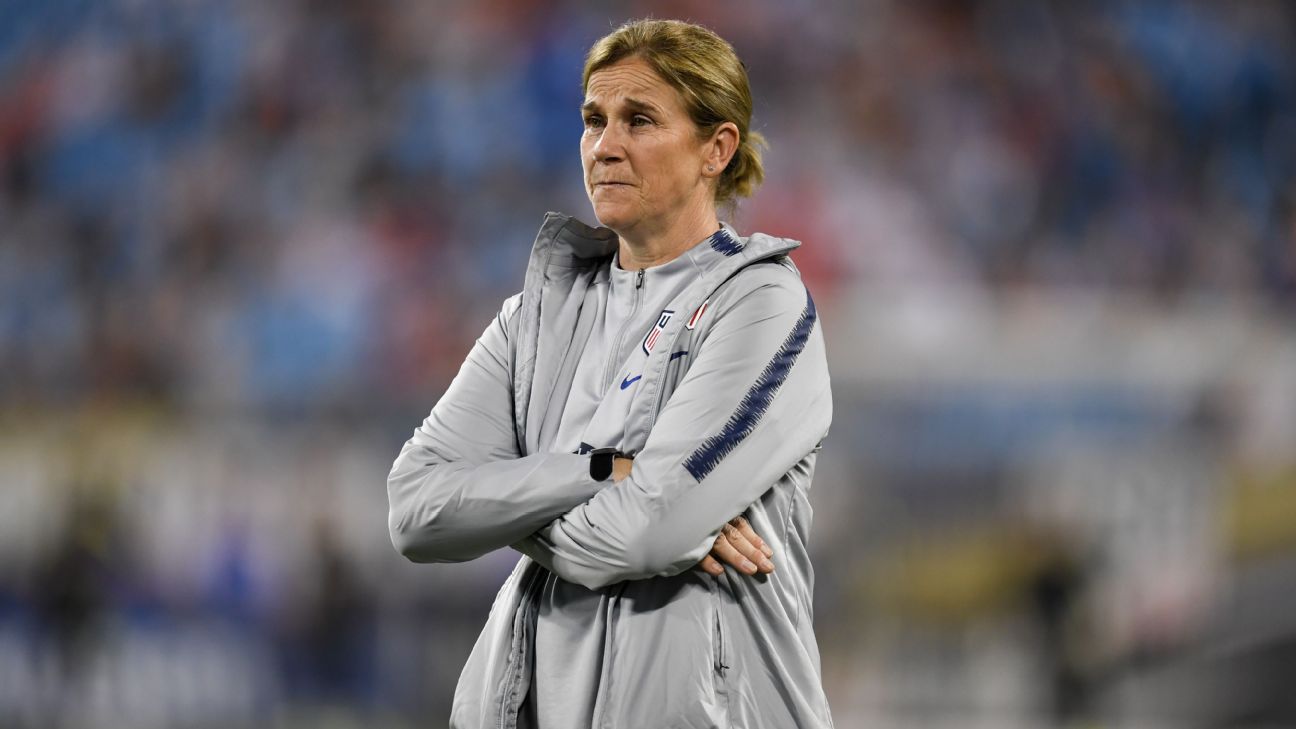SYDNEY — Former two-time Women’s World Cup-winning coach Jill Ellis said the failure of the United States women’s national team at this year’s tournament should galvanize leaders to make changes and be a turning point in the sport in the country.
“Do I see it as a step back? No, I see it as a motivating force,” Ellis told reporters at the FIFA Women’s Football Convention on Friday. “People need to come to the table. We can spur more collaboration. Maybe this is a moment and reflection point for us to get together and for stakeholders to work out a bigger plan.”
– Stream on ESPN+: LaLiga, Bundesliga, more (U.S.)
– Murray: USWNT changes that need to happen for Paris 2024
Such discussions should include changes at the U.S. youth development level, she added.
“At the end of the day, you want the best players to train with the best players,” Ellis said. “I mean, the ECNL had a 6-0 semifinal. There’s so much disparity in that league, and it’s the best.”
The Elite Clubs National League, or ECNL, is the premiere youth developmental league in the United States for girls.
“The beauty of the smaller countries is they get the best to train with each other, so how do we look at that environment?” Ellis added. “How do we get the best coaches in the youth environment? The training environment matters.”
Ellis is president of San Diego Wave FC in the National Women’s Soccer League.
The NWSL does not have a homegrown player rule, which would incentivize teams to develop young players so they can have first dibs on signing them professionally, but sources have told ESPN it is an idea that’s been under discussion for years. Only half of the teams in the league have their own youth academies.
Asked by ESPN if the USWNT’s failure at the Women’s World Cup reflected shortcomings of the NWSL because all but one player (Lindsey Horan) plays in the U.S.-based league, Ellis said it is something that should be discussed.
“I think those conversations have got to happen and are going to happen,” she said.
Ellis pointed to Jaedyn Shaw, the 18-year-old who bypassed college to go pro at the Wave as an example that talent is coming through the ranks in the NWSL. Shaw had to get an exemption from the NWSL to sign with the Wave at 17, but the league has since lifted its age restrictions.
Still, Ellis said, good talent alone is not enough.
“There’s a lot of talent, but I think there are opportunities to grow in certain areas and pull certain levers to accelerate,” Ellis said.
“I do think allowing minors to sign has been a big step, but we need to make our league so attractive that people don’t want to go anywhere else, and we’ve also got to commit to the development process.”
For years, the best American players on the women’s side came up through university programs, which gave the U.S. national team an advantage over other countries on the world stage.
Title IX, the 1972 law that required most universities to spend money equally on men’s and women’s programming, gave the U.S. an advantage, Ellis said, but other countries are expanding their academies for girls, which puts pressure on the U.S. to evolve.
“The U.S. had a head start — in a 100-meter race, the U.S. had a 10-meter start with Title IX,” she said. “I grew up in England, I didn’t have opportunities to play football until I moved to the U.S.
“But I think now we’ve got to make sure we have multiple pathways for players. Not just college — players have got to find and choose their own pathway.
“Where we’ve gotten to in the U.S. is there are younger players going pro, going to Europe. That’s what’s important: giving top players choices.”



